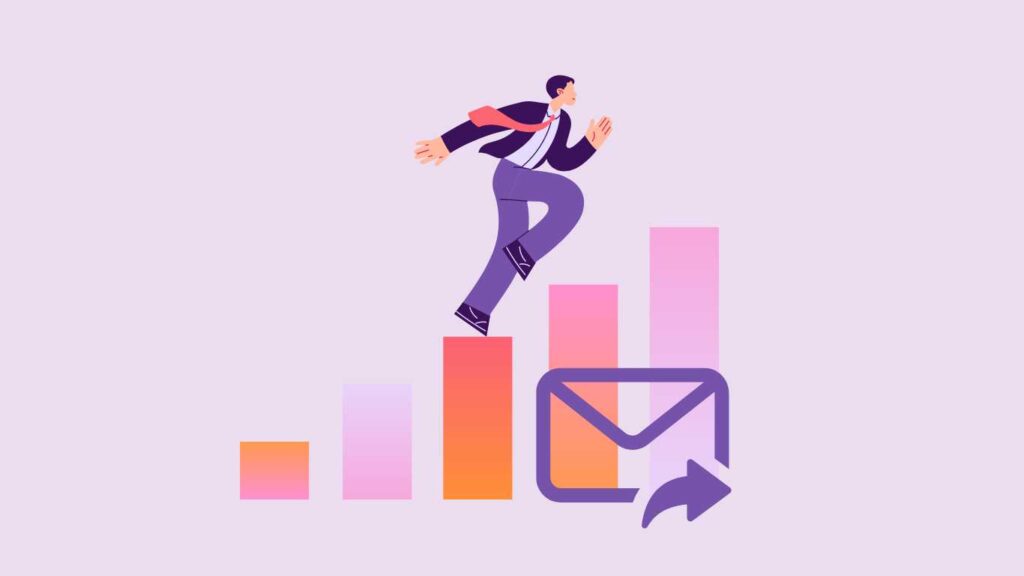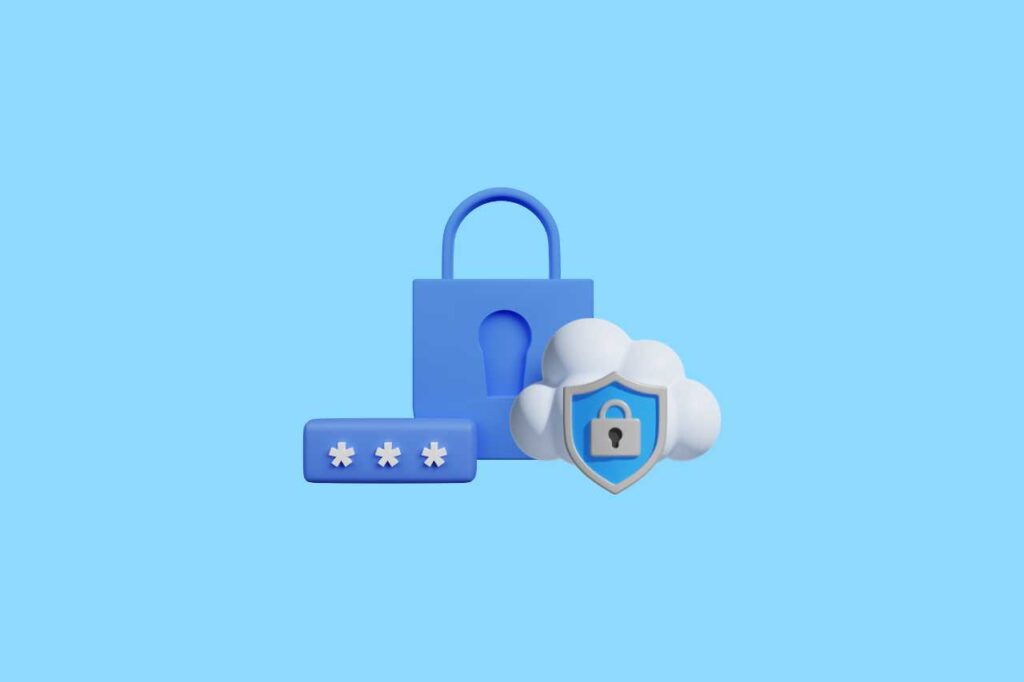Why is email productivity so important?
In the digital age, email productivity is the lifeblood of every successful customer-facing team.
High levels of email productivity lead to quick email reply times, which drive improved customer satisfaction and retention. The more productive your teams are on email, the better they can manage their workloads, provide consistent customer experiences, close more leads, and support revenue growth.
But it’s not always easy. Customer-facing teams deal with an unprecedented volume of inbound emails, customer expectations are at an all-time high, and the market has never been more competitive.
What are some of the common email management challenges affecting email productivity?
Also Read:

Email productivity begins with choosing a service provider that meets your email needs. Not all email services are designed equally. You need to weigh up the pros and cons of each of the most popular (and even the slightly obscure!) email services and choose the one that best suits your needs.
Here’s a basic comparison of some of the most popular email platforms commonly used by customer-facing teams, focusing on key features relevant to email productivity.
Comparison Table
Feature Gmail Outlook Apple Mail Zoho Mail Proton Mail Integration Google Workspace Microsoft 365 macOS/iOS Zoho Apps Limited Search funtionality Excellent Good Good Good Basic Collaboration Excellent Good Good Good Limited Storage Limited (free tier) Good Based on iCloud Good Limited (free tier) Security & privacy Good Excellent Excellent Good Excellent User interface Intuitive Feature-rich Intuitive Functional Simple Advanced features Extensions required Built-in Basic Good Limited Cost -effectiveness Good Good Dependent on iCloud Excellent Higher costs
Each platform has its own strengths and weaknesses, but it’s worth noting that the vast majority of customer-facing teams use Outlook or Gmail as their email platform of choice.
Essential features to look for when prioritizing email productivity
| Integration | Compatibility with CRM and other email productivity tools like timetoreply. |
|---|---|
| Email management | Automation, filtering, sorting, and templates. |
| Collaboration | Shared inboxes, commenting, and tagging features. |
| User experience | Intuitive interface and mobile accessibility. |
| Security & compliance | Data security measures and regulatory compliance. |
| Customization & scalability | Customization options and scalability for growth. |
| Analytics & reporting | Tools for tracking performance metrics and gaining insights. |
| Support & training | Quality of customer support and availability of training resources. |
| Cost & licensing | Pricing plans and flexible licensing options. |
Also Read:
Successful customer-facing teams know the value of customizing their inbox layouts for maximum email productivity and visibility over inbound queries. While each email platform offers its own blend of customization options, these are some of the main ways in which you could leverage customization to drive email productivity within your teams:
Also Read:
The next step toward maximizing email productivity within customer-facing teams is to establish clear email policies. These policies should cover aspects such as personal vs professional email use and email response times.
Personal vs professional emails: Distinguishing between personal and professional email use is crucial for customer-facing professionals to maintain email productivity, ensure professionalism, and protect sensitive information. Customer-facing professionals should maintain separate email accounts for work and personal purposes to prevent personal emails from cluttering their professional inboxes. A personal email account that is not linked to any professional activities is essential to distinguish between personal and professional communication, enhancing email productivity.
Email response times: Teams should also set email response time benchmarks to ensure timely responses to inbound customer emails. Implement a system to identify and prioritize urgent customer inquiries, allowing your team to address critical issues promptly. And leverage specialized email response time tracking software, ensuring you unlock fast email reply value at every touchpoint.

One of the great ambitions for customer-facing professionals dealing with growing volumes of inbound mail is achieving Inbox Zero. “Inbox Zero” is a rigorous email management strategy aimed at keeping the inbox empty, or nearly empty. The term was coined by productivity expert Merlin Mann, who emphasizes the importance of managing email efficiently to reduce stress and increase email productivity.
Inbox Zero offers several benefits, including:
Reduced stress: Maintaining an empty or near-empty inbox reduces the stress associated with managing a large volume of emails.
Greater email productivity: By dealing with each email promptly and efficiently, customer-facing teams can spend more time on high-value tasks.
More focus: With fewer emails vying for attention, it’s easier to focus on important tasks without constant distractions.
Better organization: Categorizing and organizing emails ensures that important information is easily accessible when needed.
However, it’s worth noting that “Inbox Zero” is not about keeping the inbox empty at all times but rather about having a systematic approach to email management that prevents overload and helps maintain focus and email productivity.
Effective email sorting techniques
Customer-facing teams can apply some common email sorting techniques to bring them closer to Inbox Zero and improve their email productivity, including:
Also Read:
Writing excellent emails can drive greater email productivity and deliver a consistently excellent customer experience. It’s not rocket science, but there is an art to it.
Here are some top email productivity tips for crafting clear and concise emails:
Email templates for common responses
You should also make use of email templates for common responses to customer queries to cut down on time and maintain a consistent quality of response. Here are some of our favorite email response templates to boost your email productivity — feel free to use them in your responses!
Subject: Thank you for reaching out
Hi [Customer Name],
Thank you for getting in touch! We’ve received your inquiry regarding [topic or issue] and are currently reviewing it. You can expect a detailed response from us within [time frame].
If you have any additional information that might help, feel free to reply to this email.
Best regards,
[Your Name]
[Your Position]
Subject: Following up on our last conversation
Hi [Customer Name],
I just wanted to follow up on my last email regarding [topic]. Please let me know if you had a chance to review it or if there’s anything else I can assist you with.
Looking forward to your response.
Warm regards,
[Your Name]
Subject: Issue resolved – Thanks for your patience
Hi [Customer Name],
We’re happy to let you know that your issue regarding [brief issue description] has been resolved. Please check on your end and let us know if everything’s working as expected.
Thanks for your patience!
Kind regards,
[Your Name]
Also Read:
Categorizing emails by importance is essential for customer-facing teams that want to maintain high levels of email productivity. By applying labels to inbound emails, such as ‘Urgent’, ‘Follow-Up’, ‘Pending’, or ‘Resolved’, customer-facing teams can quickly attend to the most important emails while also ensuring that no important email goes unanswered.
Some teams may also want to use automation to increase email productivity. It quickly filters emails based on their importance, who sent the email (for example, a high-value customer), and the nature of the email, whether it’s a complaint, query, or sales lead.
Folders and labels are also essential tools for email productivity. By dividing emails by categories such as “Customer Inquiries,” “Support Tickets,” “Follow-Ups,” “Sales Leads,” and “Internal Communications”, teams can more easily find important information about specific email conversations.
Setting up email scheduling
Another powerful email productivity strategy for customer-facing teams is email scheduling. This strategy ensures timely responses, workload management, improved customer experience, enhanced efficiency, and better performance tracking.
By leveraging email scheduling, customer service teams can ensure more effective communication, leading to higher customer satisfaction, more streamlined operations, and better email productivity.
Some email productivity tips for effective email scheduling include:
Also Read:

The best customer-facing teams leverage customer service tools and technologies to improve their email productivity and drive better performance and service quality. Here are our go-to tips for using automation, productivity tools, and advanced email features to enhance email productivity:
Setting up auto-responses:
Connecting email to task management apps:
Using calendar integration for email management:
Implementing email filters and rules:
Using email analytics to track email productivity:
Also Read:

One of the biggest dangers for customer-facing teams is the prospect of email overload. With email volumes at an all-time high — the average office worker received 121 emails every single day — and heightened customer expectations for speedy service, customer-facing teams are under near-constant pressure.
Taking some of the following steps can limit email overload, protect customer-facing teams from burnout, and increase email productivity:
Establishing “no email” times:
Managing email notifications:
Sharing inbox responsibilities:
Using virtual assistants for email management:
By setting clear boundaries and effectively delegating email tasks, customer-facing teams can significantly reduce email overload, maintain better focus, and improve email productivity and overall well-being.
Also Read:

Security and privacy are critical for email productivity. Email is the number one vector for cyberattacks, and any breach can lead to data loss, financial damage, regulatory penalties, and, most importantly, a sudden loss in trust with customers. Keeping your email environment secure and private ensures that sensitive information is protected and safeguards your customer data — and your reputation. Here are some basic tips for email security and privacy:
Implementing two-factor authentication (2FA):
Recognizing and avoiding phishing scams:
Using encryption for sensitive information:
Data protection: Use encryption tools to secure sensitive information within emails, making it unreadable to unauthorized parties. This way, information remains confidential and secure even if emails are intercepted.
Four email confidentiality best practices for increasing email productivity:
Healthy habits are essential to maintaining high levels of email productivity within customer-facing teams. Aristotle’s advice about habits is just as relevant today as when he first shared it more than 2000 years ago: “We are what we repeatedly do. Excellence, then, is not an act, but a habit.”
Let’s look at some useful habits that can improve your and your team’s email productivity:
Setting daily email check times:
Creating a process for unsubscribing:
Regularly reviewing email productivity:
Adjusting strategies based on performance:
Also Read:
1. What is the best way to achieve Inbox Zero?
Achieving Inbox Zero requires a disciplined approach that leverages best practices and technology to ease the burden on customer-facing teams’ overflowing inboxes. When dealing with email, consider using the 4D approach, which involves:
In addition, use filters and labels to sort incoming emails into categories, maintain inbox hygiene by unsubscribing from unwanted newsletters and promotional mails, and regularly review and adjust your email management strategies based on performance and productivity insights. Here, an email performance optimization tool can provide invaluable automation and analytics to push your email productivity to new heights.
2. How often should I check my email?
Set specific times during the day for checking email to free you up for deeper work. If you’re in a customer-facing role where reply times are important, consider making use of email productivity software to alert you to important emails or even help distribute email-related workload more evenly across your team. This ensures you get to focus on the important work without compromising on your customer experience.
3. What tools can help automate my email management?
There are several tools that can help teams and individuals automate and optimize their email performance to drive higher levels of email productivity. Tools like Gmail filters and Outlook rules can automate email organization. For teams, Timetoreply tracks response times and improves accountability. These tools boost email productivity by automating sorting and monitoring, and ensuring timely customer communication.
4. How can I ensure my email practices are secure?
Email is the number one vector for cyberattacks, so it’s vital that you keep your email communication secure. Implementing security software to protect against malware, ransomware, and phishing is vital, as is two-factor authentication. Stay vigilant and avoid disclosing personal information or clicking on malicious or infected links or files. Other ways to keep email secure include strong passwords, updated software, end-user training, and a generally skeptical view of email requests for information.
5. What are some tips for writing more effective emails?
Writing effective emails is critical for any customer-facing professional. Our top tips for improving the effectiveness of your emails include: using a clear subject line, being brief and to-the-point, using simple, clear language and avoiding jargon, structuring the email for readability by using short paragraphs, bullet points and lists, stating the purpose of the email upfront, including a call to action to ensure the recipient understands what is required of them, being polite and professional at all times, and proofreading and spell-checking before sending.
So, what do we know about the importance of email productivity and the steps we can take to improve?
By implementing these changes and using technology to track, measure, and analyze email performance across their customer-facing operations, companies can drive continuous improvement in their customer experiences.
This leads to happier customers, greater retention, improved revenue, and positive long-term growth.
If you’d like to know more about the power of email performance optimization software for customer-facing teams, head over to timetoreply’s dedicated content hub for a range of expert insights, best practices, templates, and tools that can help you win the hearts and minds of customers.
Get live inbox alerts and reply quickly to customer emails with timetoreply